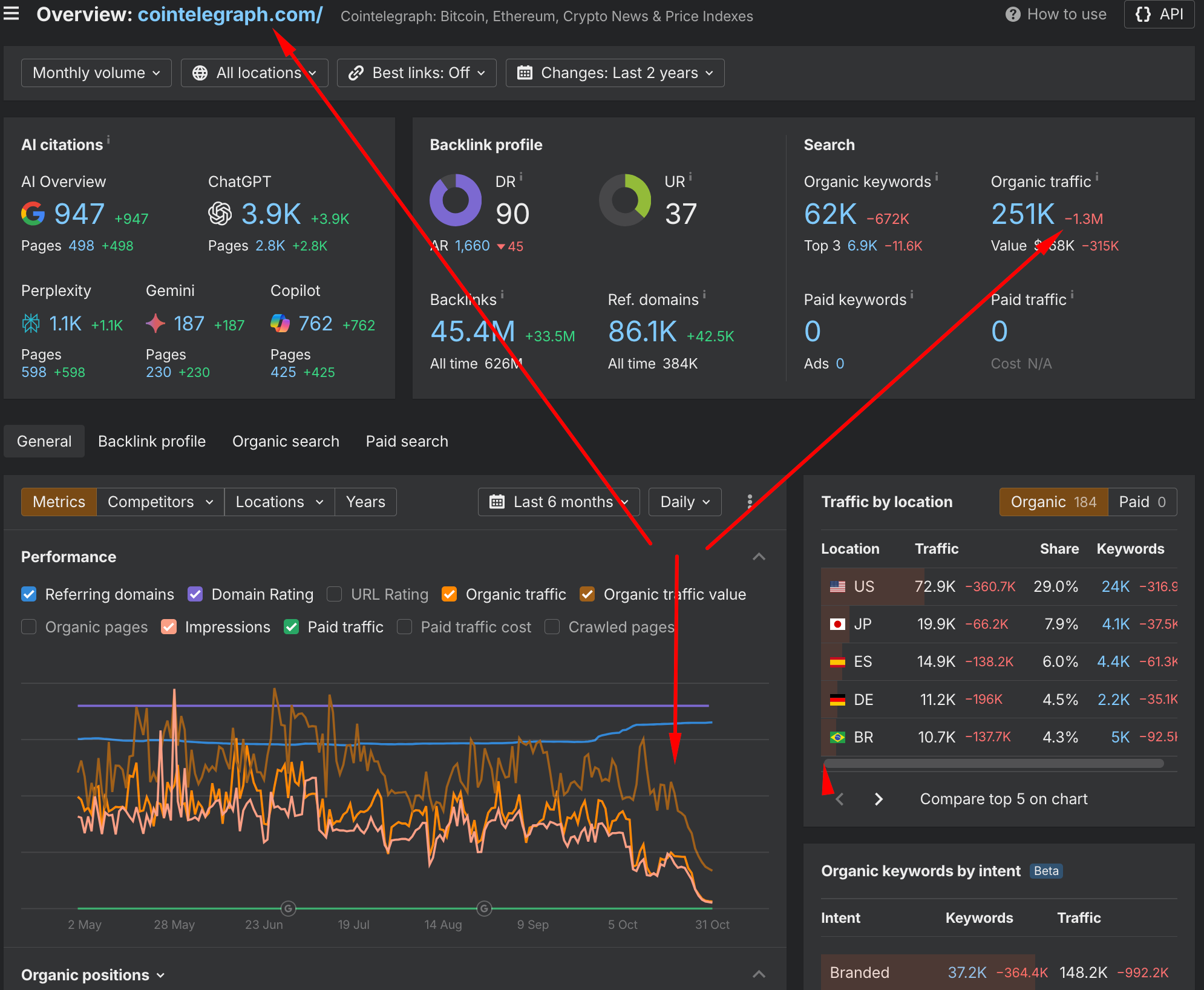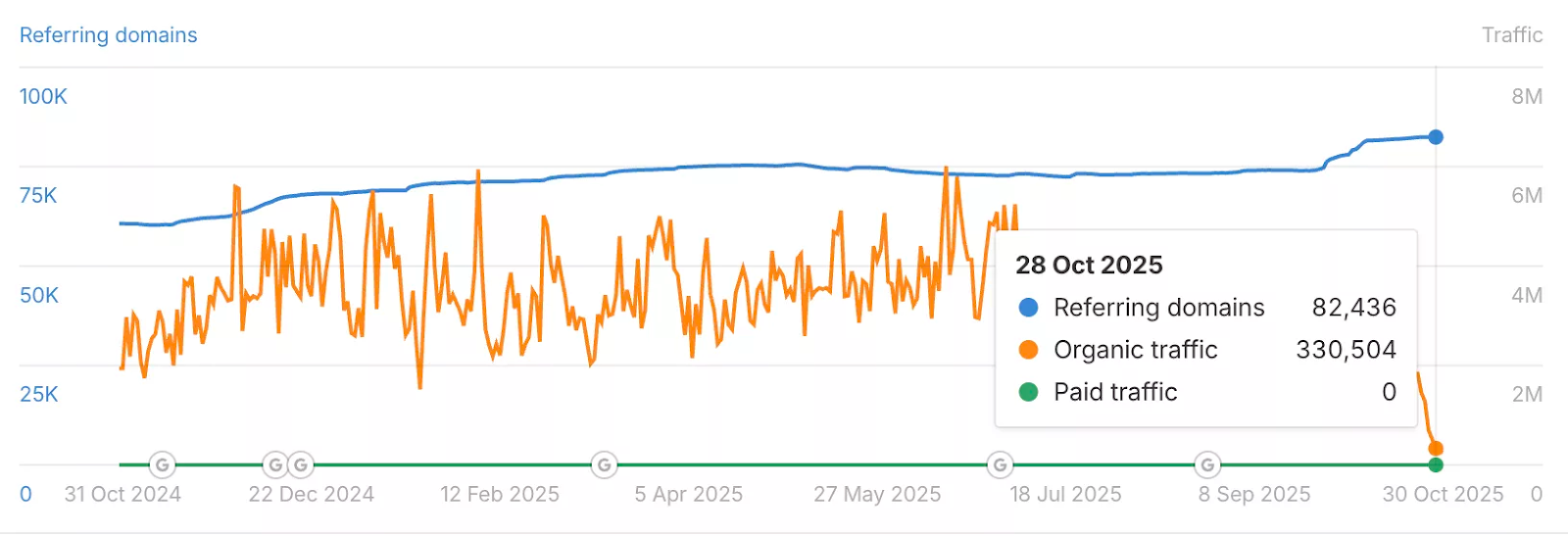- Cointelegraph, one of the largest crypto media outlets, has experienced a dramatic decline in web traffic following recent Google Search algorithm updates
- Some attribute the decline to Google’s ongoing adjustments aimed at reducing low-quality content in Your Money or Your Life (YMYL) categories
- Alena Afanaseva, founder and CEO of BeInCrypto, posted on LinkedIn that she sympathizes with the pressure crypto newsrooms face, but pointed out deeper structural issues
Cointelegraph, one of the largest crypto media outlets, has experienced a dramatic decline in web traffic following recent Google Search algorithm updates. This sparked a debate about the fragile business model behind crypto news media.
Some attribute the decline to Google’s ongoing adjustments aimed at reducing low-quality content in Your Money or Your Life (YMYL) categories, which is a term Google uses for content that can affect users’ finances and personal lives, an area that clearly includes crypto.

Related: Web3 vs Web2 : What’s the Difference?
According to web analytics tools such as SimilarWeb and Ahrefs, Cointelegraph’s traffic has been falling constantly over the recent months. Although exact figures vary by data provider, there is at least a 50% drop in search traffic across recent Google core updates. Some calculations (like the Ahrefs chart below) show an approximately 90% fall in organic traffic from June to today.

Crypto news outlets often rely heavily on SEO visibility, making such drops more damaging than for mainstream news organizations.
BeInCrypto CEO: “The Problem Isn’t Just Google”
The traffic collapse prompted a notable response from Alena Afanaseva, founder and CEO of BeInCrypto. She posted on LinkedIn that she sympathizes with the pressure crypto newsrooms face, but pointed out deeper structural issues.
Afanaseva cautioned that many crypto outlets depend on advertising tied to gambling platforms, memecoins, or speculative trading, which weakens trust signals to Google’s ranking systems. Also, she noted that building Web3-native media models (such as those with tokenized membership, loyalty rewards, or decentralized identity access) is promising but costly and technically difficult.
Editors, analysts, and founders responding to her post expressed similar concerns. It looks like the main consensus is that building loyal audiences, trust, and delivering content that has value is key.
Plus, we have to take into consideration that the environment is different in 2025. A good deal of audiences now discover crypto news through X, Telegram communities, YouTube analysts and on-chain researchers, Substack newsletters, and similar, rather than Google searches.
In the end, in a setting where publishers rely on SEO for viability and often fuse journalism with the promotion of crypto market trends, a change in Google’s rules to favor trustworthy sites can be more damaging than a falling market.
Related: Google Partners with Coinbase to Enable Crypto Payments via New AI System
Disclaimer: The information presented in this article is for informational and educational purposes only. The article does not constitute financial advice or advice of any kind. Coin Edition is not responsible for any losses incurred as a result of the utilization of content, products, or services mentioned. Readers are advised to exercise caution before taking any action related to the company.







